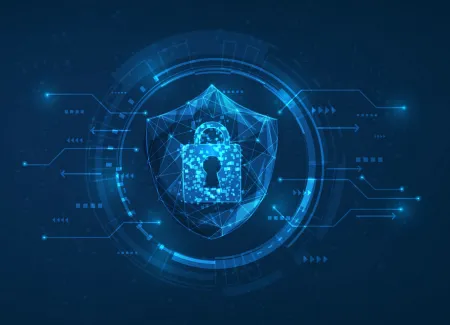What is Identity and Access Management? How is it Useful in Cybersecurity?

Data is growing, not only in volume but also in value. But as businesses pour resources into gathering and processing data, they must also ensure that it is secured against threats and breaches. This is where Identity and Access Management (IAM) comes in handy. But, what is identity and access management? It is a tool that helps businesses protect their data from both internal and external threats. It acts as multi-level safeguarding of company data by assigning and tracking user access to prevent any harm.
What is Identity and Access Management?
Identity and access management is an umbrella term for a combination of software used to manage digital identities and user accesses across an organization. Authentication, authorization, and the ability to access critical information are the key components that IAM regulates. Moreover, IAM software acts as a directory of employee log-in information and permissions. In addition, it maintains records of assigned, changed, and removed accesses.
 Why Do You Need IAM?
Why Do You Need IAM?
As digital activities evolve, the need for IAM becomes increasingly prominent. As access privileges are based on policy, it helps ensure access is appropriately assigned. Moreover, authenticating and managing access is made easier even as it facilitates maintaining data integrity, providing data when required for audits, and complying with government regulations.
Security and Peace of Mind
IAM allows businesses to control user access, ensure authentication, and prohibit unauthorized access. Moreover, automated IAM can also reduce the strain on the IT department and minimize administrative effort and time.
Productivity
Excess security measures can hamper productivity. IAM tools (like single sign-on) offer easy access and reduce repeated logging-in time. Also, as all user access information is stored in one place, authentication and authorization are faster, thus enhancing productivity.
How Does IAM Work?
IAM provides security through policies, regulations, and software to reduce and prevent user access-based risks to a business. Therefore, it is a comprehensive framework that identifies individuals, and their roles in the organization, updating individuals and roles in the system and providing appropriate access to them.
ALSO READ: What is Cybersecurity and Why is it a Great Career Choice for You
Difference Between Identity Management and Access Management
Although identity management and access management are combined, these are individual disciplines that perform separate functions. Simply put, identity and access can be separated by the ability to log in and access the information you need after logging in. Therefore, this is the key difference between identity management, where the goal is authenticating users, and access management, where the goal is authorizing users.
Thus, while they are primarily used as one discipline, businesses must focus on both individually to regulate access to company information.
Tools Needed to Implement IAM
MFA
Multi-Factor Authentication (MFA) offers an added layer of security in IAM. This can be the remedy if the first layer of usernames and passwords is compromised. In addition, MFA can prevent the unreliability of passwords as it requires only information that the end user possesses besides their credentials.
SSO
Single sign-on (SSO) is a part of the larger IAM strategy. Firstly, it saves time and requires additional support like credential storage and protocol implementation. Also, SSO reduces the threat to company information as employees only log in once a day and use a single set of credentials.
 IAM Implementation Strategy Basics
IAM Implementation Strategy Basics
Central Identity Management
Here, the employee can access required data and tools from a single workspace.
Secure Access
It is the security process that acts as an added layer of protection to prevent unauthorized access to company information.
Policy-Based Control
It lets company policies dictate how access is assigned for each role.
Zero-Trust Policy
Newly accessing or maintaining access to company information is consistently authenticated and authorized for all users within and outside the organization.
Secure Privileged Access management
This IAM strategy allows privileged access to certain identities that may not be available to all users.
Training
With cybersecurity concerns gaining importance across industries, IAM courses are increasingly popular among IT professionals.
Support
IAM support assists authorized users in tackling incidents.
Now that you have a better understanding of what is identity and access management, explore Emeritus’ portfolio of online cybersecurity courses.
A career in cybersecurity can be both challenging and highly rewarding. If you’ve been wondering how to get into cyber security, we can help! Check out our step-by-step guide to becoming a cybersecurity analyst, and learn more about how Emeritus can help you achieve your goals.
By Juilee Kamble
Write to us at content@emeritus.org







